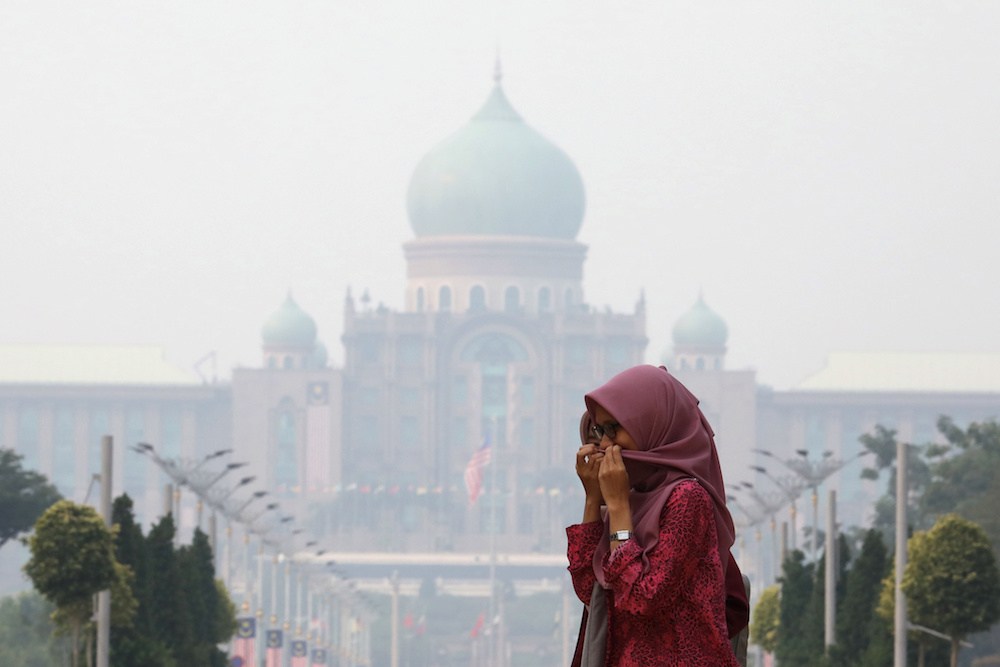
Haze doesn’t just cause breathing difficulties. It also affects the heart, which in some cases that no one is ready to talk about – it can kill.
Large portions of Malaysia are now blanketed by smoke, dust, moisture, and vapour suspended in the air.
As authorities are struggling to tackle the transboundary crisis, more people are affected and more schools are ordered to close. Sri Aman, Sarawak suffers the worst, as the Air Pollutant Index (API) value hit 300 as of September 17.
Looking back into this haze issue, the history of haze in Malaysia goes back decades ago, with the worst one recorded in 1997.

Source
The effects of haze are not instantly visible, until health clinics are swarmed with people looking for treatment for cough, chest phlegm, and colds, among others.
According to a review on haze and health impacts in ASEAN countries, Malaysia struggled with four types of haze-induced health impact reported between 1995 and 2017.
As seen below, they are cancer risk, mortality, cardiovascular morbidity, and respiratory morbidity.

Haze is commonly associated with respiratory illness and it was recorded in almost all countries involved in the review.
This is because, inhaling the fine particulate matter (PM) from the polluted air which is foreign to the body is like inhaling smoke. The most harmful pollutants, known as PM2.5, can be sucked deep into the lungs and it is difficult for the respiratory system to expel or break them down.
However, two of the most distinct haze-induced health impacts recorded in Malaysia and are rarely talked about are; mortality and cardiovascular morbidity.
The higher the API, the higher the mortality rate
The 1997 haze was a monumental disaster for Malaysia. A research on the impact of the haze found that the percentage of the mortality rate increased after a high-pollution day, especially for those aged between 65 and 74, who were the most vulnerable.

Although the spike was short-lived, it was still a strong indicator that the mortality rate can grow in matter of days when air pollution is at its highest.
Haze can also cause many health symptoms. From less harmful symptoms such as irritation to the eyes, nose, and throat, to the more chronic disease such as asthma and chronic obstructive pulmonary disease (COPD).
Statistics by Health Data shows that there is a decline in child mortality rate from 1990 to 2017, and an increase in life expectancy during the same period.


However, most deaths that occurred throughout the years were caused by ischemic heart diseases, which could be worsened with the presence of haze.

Many Malaysians died due to heart problems
Malaysia is already the fattest nation in Asia, and the obesity is also affecting many people’s heart conditions.
According to the World Health Organization (WHO), the Malaysian proportional mortality rate of cardiovascular diseases (CVDs) was at 36% in 2014.
Adding to this alarming number, the Health Ministry shared that Malaysians developed heart diseases at the age of 58, much younger compared to 65-year-old Thais, 63-year-old Chinese, 66-year-old Westerners, and 68 year-old Canadians.
People with pre-existing heart diseases are at the highest risk during haze. These diseases include coronary artery disease, congestive heart failure, and heart attacks.
On hazy days, prolonged exposure to the PM in the air, as well as other substances such as sulphur dioxide, ozone, nitrogen dioxide, and carbon monoxide can aggravate these conditions, hence increasing their cardiovascular morbidity.

A Harvard and Columbia University study claimed that the 2015 Southeast Asian haze had caused 6,500 deaths in Malaysia, although it was strongly refuted by officials.
But no one can truly deny that haze can kill, or at the least bring continuous discomfort to the people who are forced to go through it.
If this persists for more weeks, it is only a matter of time before the mortality rate increases once more, and many people will be prone to sickness before the sky clears again.

